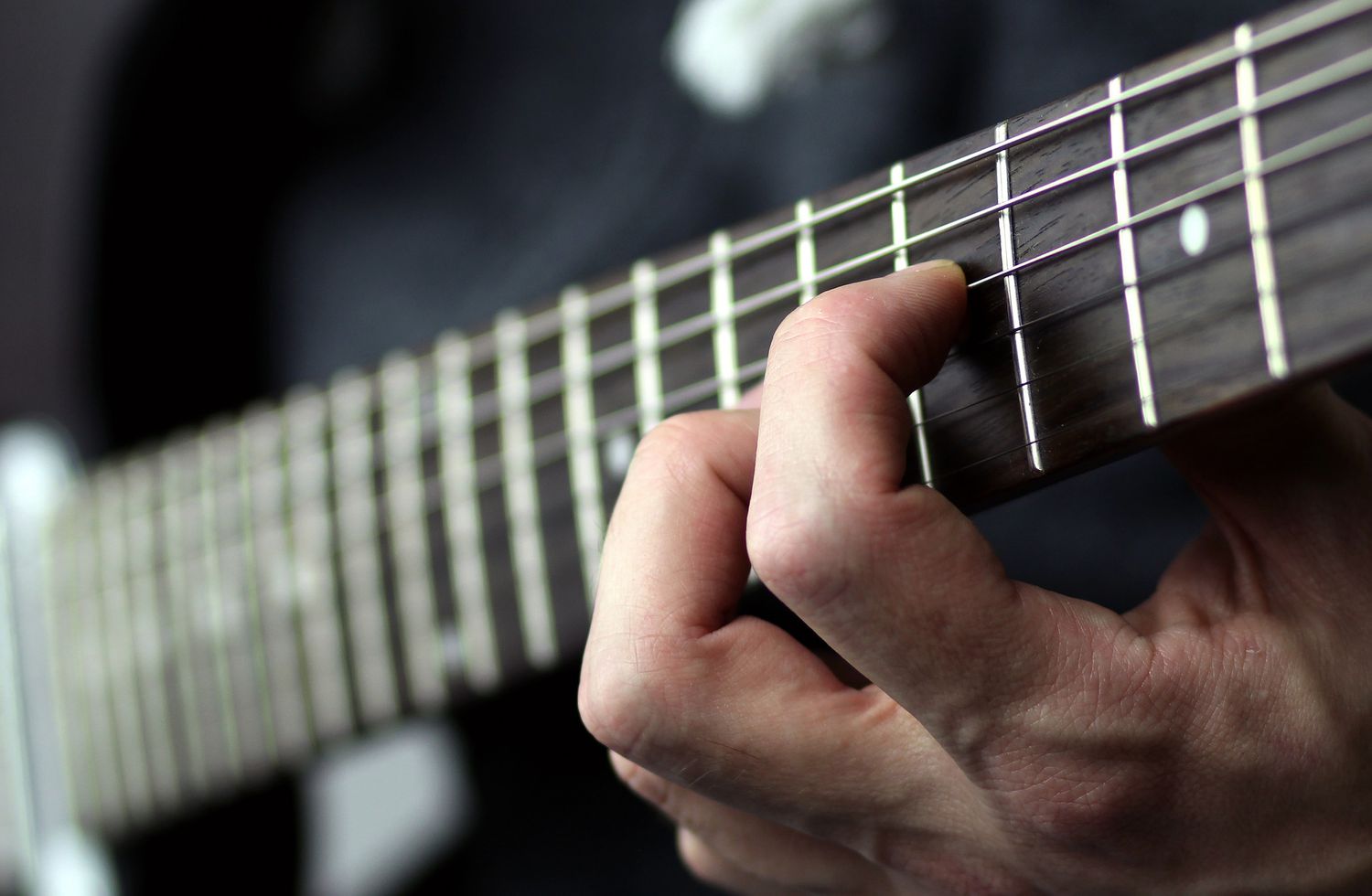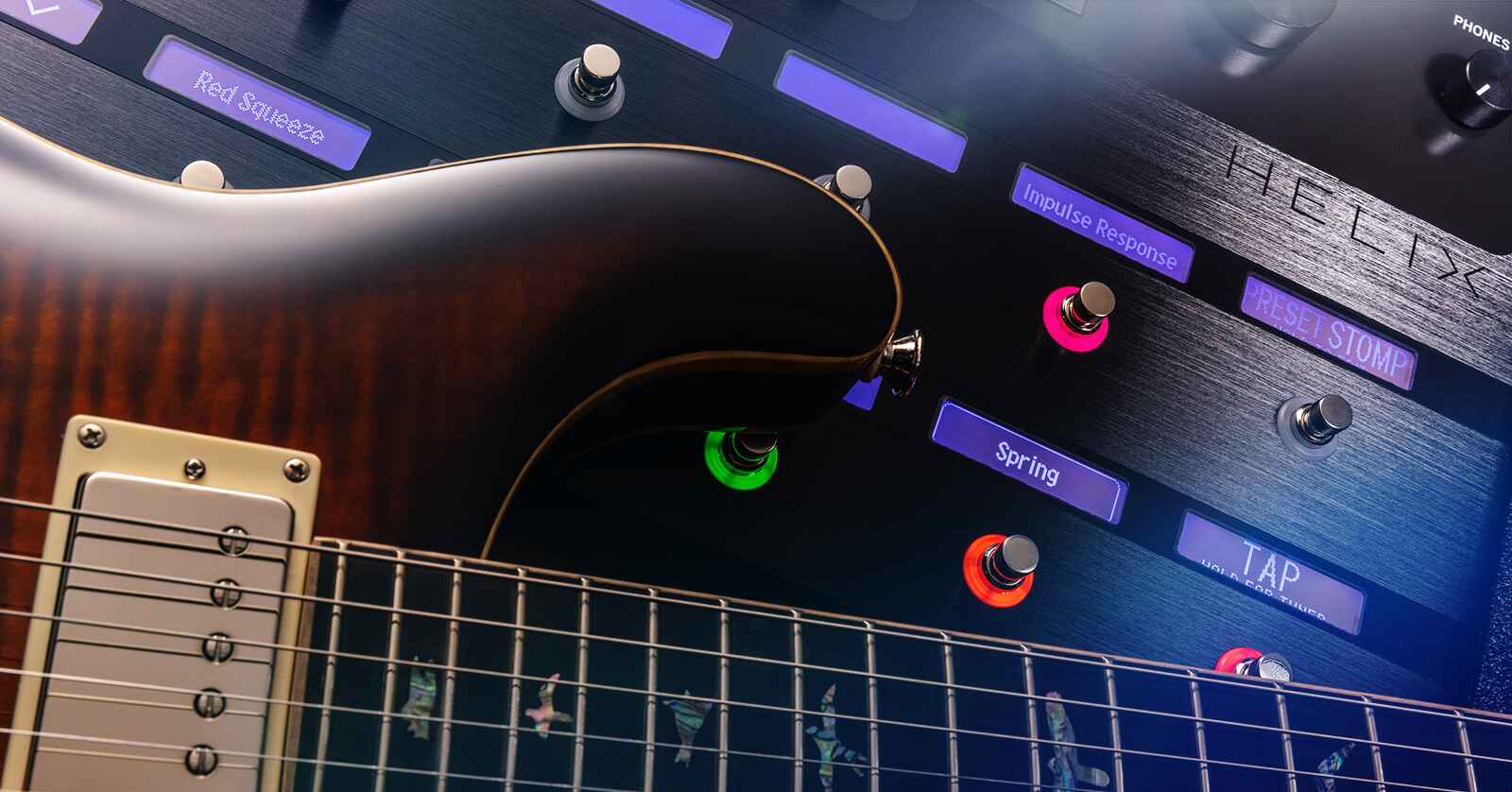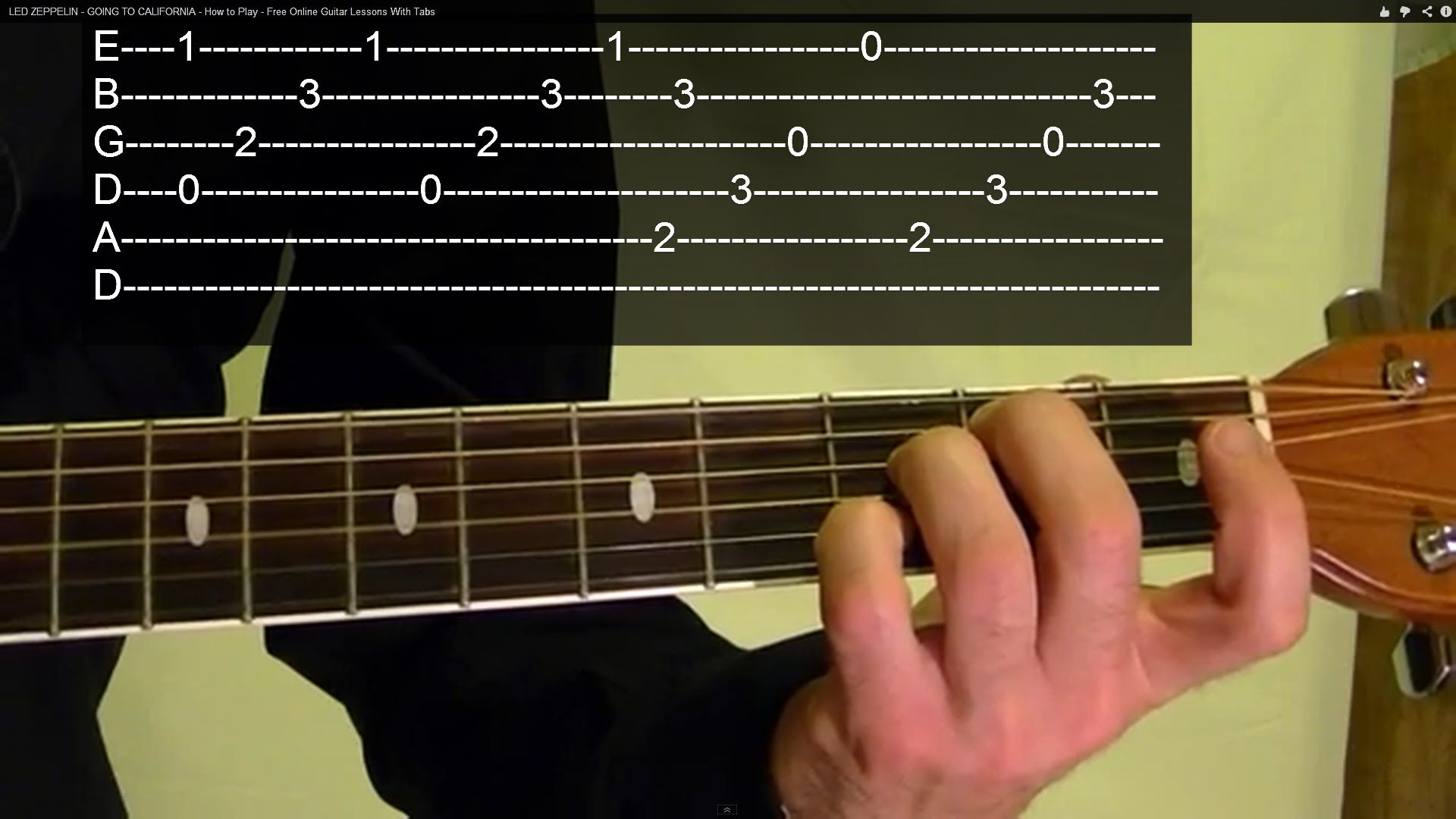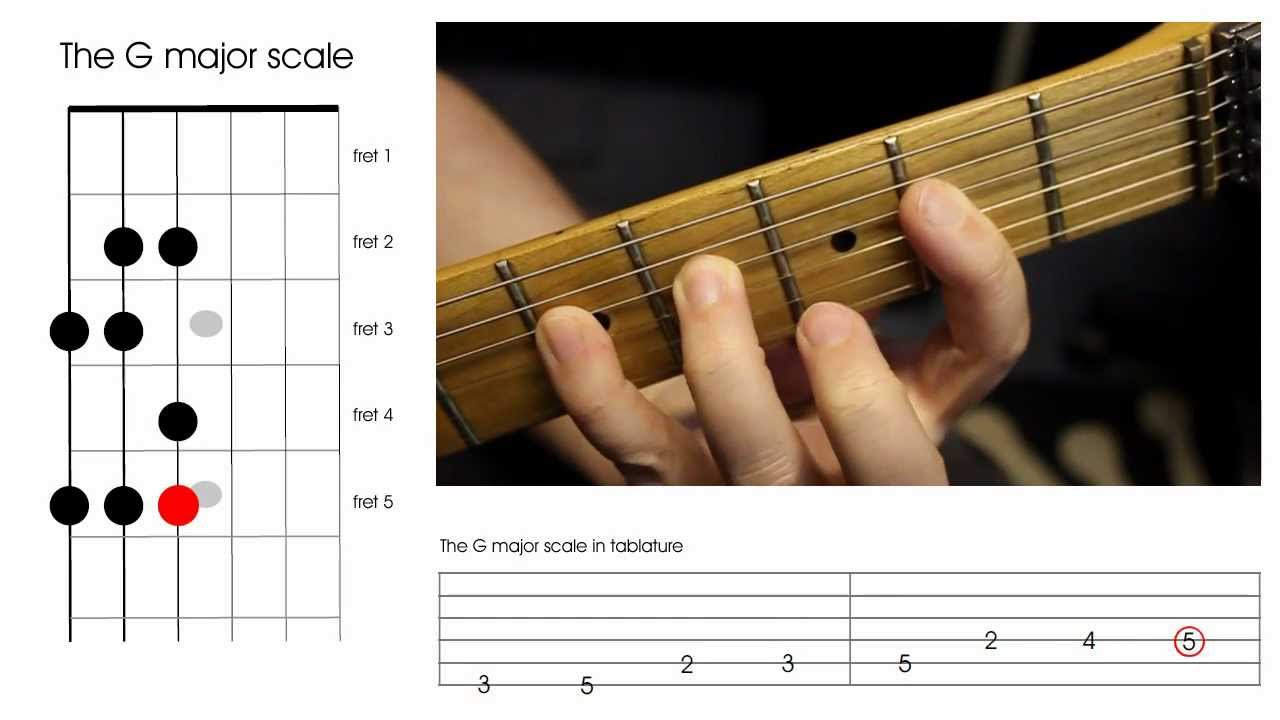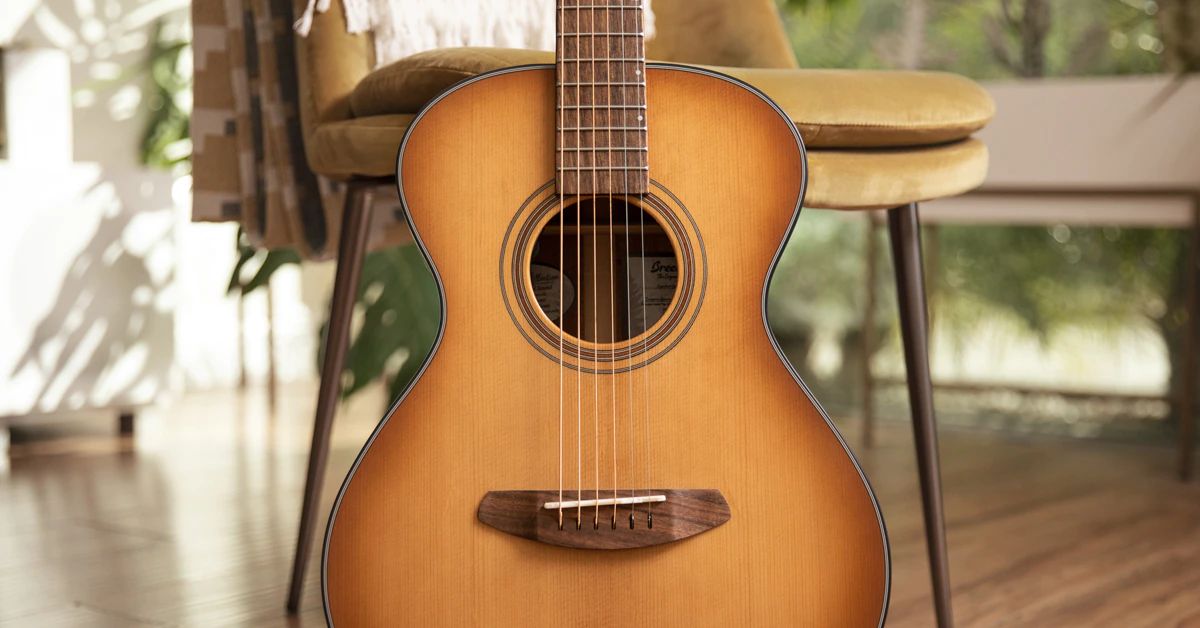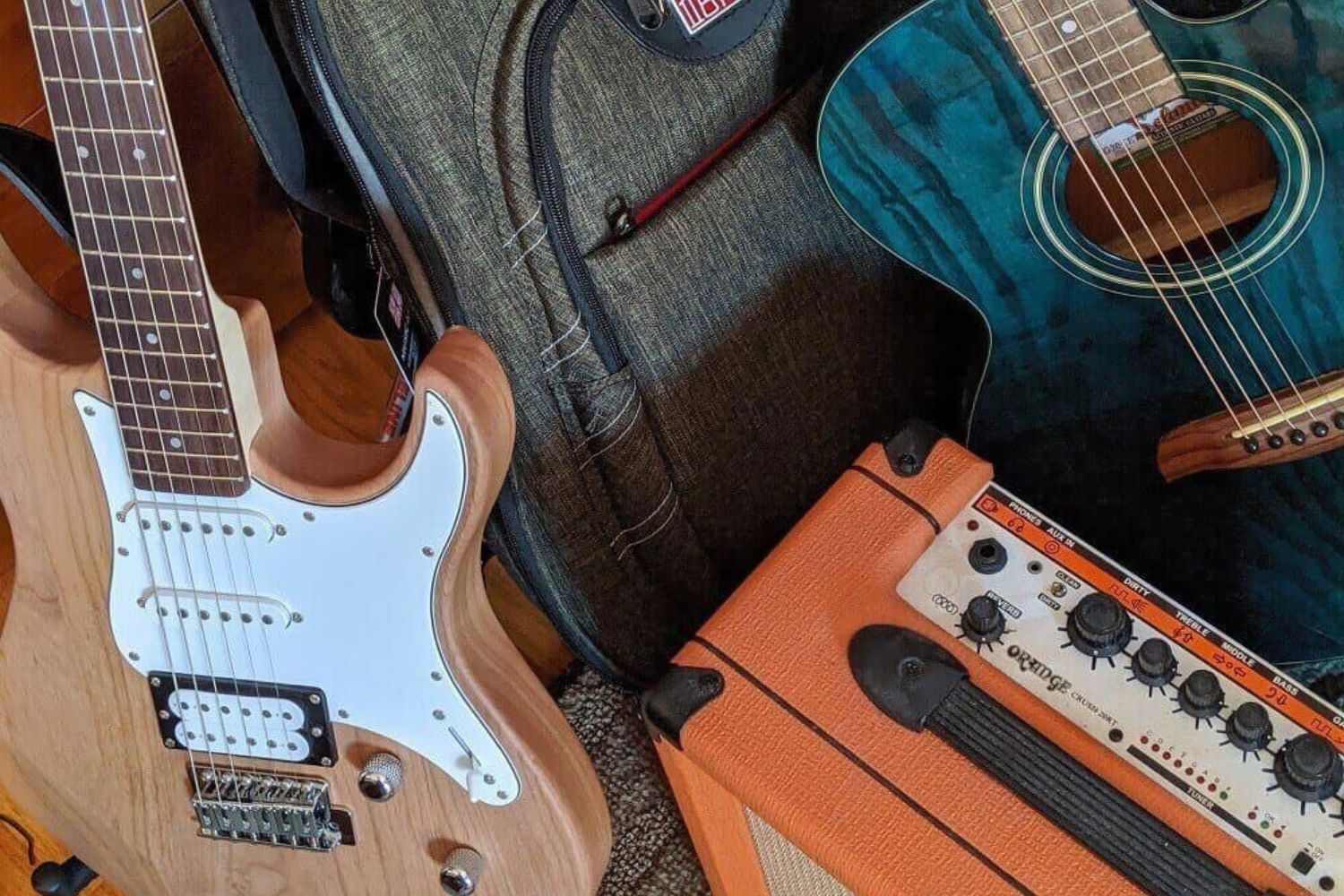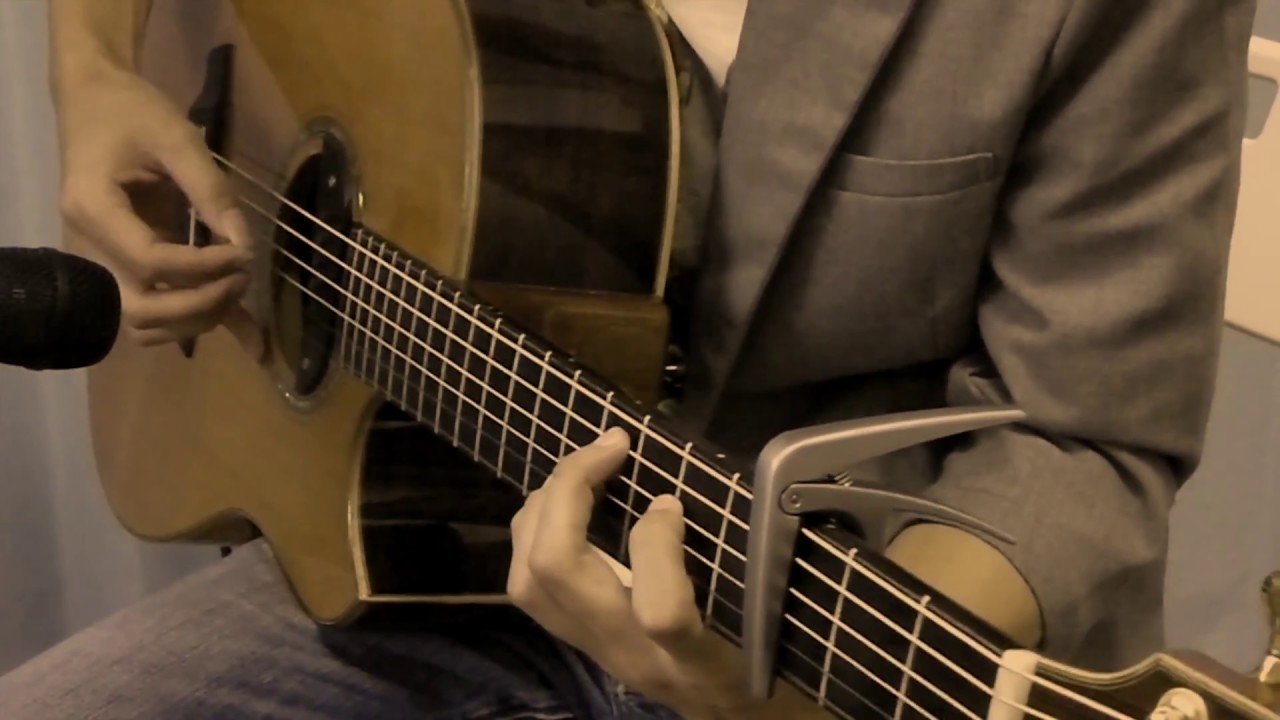Introduction
Welcome to the world of acoustic guitar playing! If you’re just starting out or looking to expand your repertoire, learning hammer-ons and pull-offs is an essential skill to add to your toolbox. These techniques, also known as legato playing, can add depth, fluidity, and expressiveness to your guitar playing.
But what exactly are hammer-ons and pull-offs? In simple terms, they are two techniques used to sound different notes on the guitar without strumming or picking every individual string. A hammer-on is when you use your fretting hand to “hammer” a finger onto a higher fret, producing a clear note without picking the string. On the other hand, a pull-off is when you pluck a string with a finger and then “pull” the finger off the fretboard, creating a lower note.
Mastering hammer-ons and pull-offs can bring a myriad of benefits to your acoustic guitar playing. Firstly, they allow you to play notes with greater speed and fluidity compared to picking or strumming every note. This can be especially handy when playing fast-paced melodies or intricate licks. Additionally, hammer-ons and pull-offs provide a seamless transition between notes, creating a smooth and connected sound.
Now that you understand the basics of hammer-ons and pull-offs, it’s time to dive into the techniques and exercises that will help you master these skills on your acoustic guitar. Whether you’re a beginner or an intermediate player, this guide will provide you with the necessary tools to improve your legato playing and take your guitar skills to the next level.
What are Hammer-ons and Pull-offs?
Hammer-ons and pull-offs are two fundamental techniques used in guitar playing to create smooth and connected notes without the need to pluck or strum every string individually. These techniques are commonly associated with legato playing and can greatly enhance your musical expression on the acoustic guitar.
A hammer-on is performed by pressing down a finger on a lower fret and then “hammering” another finger onto a higher fret, producing a clear and distinct note. This is achieved by using the momentum of the initial finger’s downward motion to generate enough force to sound the subsequent note. With hammer-ons, the initial plucking or strumming of the string is not required.
On the other hand, a pull-off is the reverse motion of a hammer-on. It involves plucking or strumming a string with a finger on a higher fret, and then “pulling off” that finger from the string in a swift motion, causing the note to descend to a lower pitch. Just like with hammer-ons, the plucking or strumming of the string is only done once, and the subsequent notes are produced by the action of pulling off the finger.
Hammer-ons and pull-offs are not only useful for playing single notes, but they can also be incorporated into chords and chord progressions to add embellishments and variations. These techniques allow guitarists to create fluid melodies and connect different notes seamlessly, enhancing the overall musicality of their playing.
Both hammer-ons and pull-offs require precise finger movements and coordination between the fretting hand and the picking hand. Practice and repetition are key to mastering these techniques, as they require developing strength and dexterity in your fingers.
In the following sections, we will delve deeper into the specific techniques for performing hammer-ons and pull-offs on the acoustic guitar, along with exercises and tips to help you improve your execution and incorporate these techniques into your playing style.
Benefits of Using Hammer-ons and Pull-offs
Mastering hammer-ons and pull-offs can bring a multitude of benefits to your acoustic guitar playing. These techniques not only add depth and dynamics to your sound but also enhance your overall musical expression. Here are some key benefits of incorporating hammer-ons and pull-offs into your playing:
- Speed and Fluidity: One of the primary advantages of hammer-ons and pull-offs is their ability to help you play notes or phrases with greater speed and fluidity. Instead of picking each note individually, these techniques allow you to execute fast and seamless passages, resulting in a smoother and more connected sound.
- Expressiveness: Hammer-ons and pull-offs bring a level of expressiveness to your guitar playing that is difficult to achieve with picking or strumming alone. By using these techniques, you can add nuances, accents, and variations to your melodies, enhancing the emotional impact and adding a unique flair to your performance.
- Seamless Transitions: One of the challenges in guitar playing is transitioning between notes, especially when playing complex melodies or fast-paced licks. Hammer-ons and pull-offs provide a natural solution to this problem by allowing you to effortlessly connect notes without interruptions. This creates a more cohesive and polished sound in your playing.
- Versatility and Creativity: Incorporating hammer-ons and pull-offs into your playing expands your sonic palette and opens up a world of possibilities. These techniques can be used in various music genres, from blues and rock to fingerstyle and classical. By experimenting with different combinations and patterns, you can unleash your creativity and develop a distinct style of playing.
- Strengthens Finger Dexterity: Practicing hammer-ons and pull-offs helps develop strength and dexterity in your fretting hand fingers. Over time, you will notice an improvement in your finger independence and control, making it easier to execute complex guitar techniques and play challenging pieces.
Whether you are a beginner guitarist or an experienced player, incorporating hammer-ons and pull-offs into your acoustic guitar playing will undoubtedly elevate your skills and musicianship. These techniques offer a range of benefits that enhance your overall sound, speed, expressiveness, and creativity. Now that you are familiar with the advantages of using hammer-ons and pull-offs, let’s take a closer look at the techniques and exercises to help you master them on your acoustic guitar.
Getting Started
If you’re new to hammer-ons and pull-offs, it’s essential to begin with the basics and build a solid foundation. Here are some important steps to get started:
- Choose the Right Guitar: Ensure that you have a properly set up acoustic guitar. The action (string height) should be comfortable, allowing you to easily fret the strings without excessive pressure.
- Warm Up: Before practicing hammer-ons and pull-offs, it’s crucial to warm up your fingers and hands. Spend a few minutes doing simple finger stretching exercises and playing scales to loosen up your muscles.
- Clean Technique: Proper technique is crucial for executing clean and precise hammer-ons and pull-offs. Focus on keeping your fingers close to the fretboard and applying adequate pressure to produce clear notes. Avoid excessive force or pressing too lightly, as this can affect the sound quality.
- Economy of Motion: To enhance efficiency and speed, strive for minimal and economical hand movements. Minimize unnecessary finger and hand motions, and maintain a relaxed yet controlled posture while playing.
- Start Slowly: Begin practicing hammer-ons and pull-offs at a comfortable tempo. Start with simple exercises or basic melodies to get accustomed to the techniques. As you build proficiency, gradually increase the speed and complexity of your practice material.
- Focus on Accuracy: Accuracy should be a priority when practicing hammer-ons and pull-offs. Pay attention to the clarity and precision of each note and make adjustments as necessary. It’s better to play slowly and accurately than to rush through the exercises with sloppy technique.
- Utilize a Metronome: Incorporate a metronome into your practice routine to develop a sense of timing and improve your rhythmic precision. Start at a slow tempo and gradually increase the speed as you become more comfortable.
- Listen and Learn: Take the time to listen to recordings of proficient guitarists who excel in using hammer-ons and pull-offs. Analyze their technique, dynamics, and musicality to gain insights and inspiration for your own playing.
Remember, mastering hammer-ons and pull-offs takes time and dedication. Regular practice and a focused approach will yield gradual progress. Don’t get discouraged if you initially find these techniques challenging. With perseverance and patience, you will improve and see the rewarding results. Now that you have the foundational knowledge to get started, let’s move on to the specific techniques for executing hammer-ons and pull-offs on the acoustic guitar.
Technique for Hammer-ons
Mastering the technique of hammer-ons is essential for adding fluidity and expressiveness to your acoustic guitar playing. Here’s a step-by-step guide on how to execute hammer-ons effectively:
- Select the Starting Note: Begin by fretting a note on the guitar neck using your fretting hand. Choose a note that you want to hammer-on to a higher fret to create the desired sound.
- Prepare Your Fingers: Position your other fingers close to the strings in a relaxed manner, ready to execute the hammer-on. This will allow for a smooth and quick transition.
- Apply Adequate Pressure: With your starting note fretted, apply enough pressure to produce a clear sound when you strike the string. The initial note must be audible and sustained.
- Hammer-on Motion: Using the finger you’ve placed close to the higher fret, swiftly and forcefully “hammer” onto the fretboard, hitting the targeted fret. Utilize the momentum created by your finger’s motion to generate enough force for the note to sound without picking the string again.
- Avoid Sharp Movements: Be mindful not to strike or pluck the string with excessive force during the hammer-on motion. It’s crucial to let the momentum of your finger’s motion do the work, rather than relying on excessive strength.
- Focus on Clarity and Precision: As you hammer-on, ensure that the resulting note is clear, distinct, and sustained. Pay attention to the quality of the sound and make any necessary adjustments to your finger placement and pressure.
- Practice Slowly: Start practicing hammer-ons at a slow tempo to build accuracy and control. Gradually increase the speed as you become more comfortable with the technique.
- Combine Hammer-ons with Other Techniques: Experiment with incorporating hammer-ons into your playing by combining them with other techniques like slides, bends, or pull-offs. This will add versatility and creativity to your guitar solos and melodies.
Remember, consistency and practice are key when learning hammer-ons. Take the time to develop your finger strength, coordination, and timing. With persistence, you will gradually refine your technique and execute clean and fluid hammer-ons. Now that you have the fundamentals, let’s move on to the technique for pull-offs on the acoustic guitar.
Technique for Pull-offs
Pull-offs are an essential technique to create smooth and connected notes on the acoustic guitar. Follow these steps to develop a strong pull-off technique:
- Select the Starting Note: Begin by fretting a note on a higher fret using your fretting hand. Choose a note that you want to pull-off to a lower fret or open string.
- Strike the String: Pluck or strum the string with your picking hand to sound the starting note. Ensure that the initial note is clear and sustained.
- Prepare for the Pull-off: Place your other finger on the lower fret or open string, ready for the pull-off motion. Keep your fingers close to the strings in a relaxed position.
- Pull-off Motion: Simultaneously pluck the string with your picking hand while pulling your finger off the fretboard in a swift and controlled motion. The action should be quick and seamless, causing the note to descend in pitch.
- Focus on Timing and Dynamics: Pay attention to the timing and smoothness of the pull-off. Aim to create an even and connected sound as you transition from the initial note to the pulled-off note. Experiment with different finger pressure and speed to achieve varied dynamics.
- Clarity and Precision: Ensure that the pulled-off note is clear and distinct in sound. Practice maintaining the same level of clarity and sustain as the starting note, even when executing fast or intricate pull-off passages.
- Combine Pull-offs with Other Techniques: Incorporate pull-offs into your playing by combining them with other techniques such as hammer-ons, slides, or bends. This will allow you to create intricate and expressive guitar licks and solos.
- Start Slowly: Begin practicing pull-offs at a slow tempo to develop precision and control. Focus on executing the technique cleanly and accurately. As you gain proficiency, gradually increase the speed and complexity of your practice material.
Remember, practicing pull-offs regularly will help you develop finger strength, control, and coordination. Be patient and persistent in your practice sessions, as mastering pull-offs takes time. With consistent effort, you will become proficient in executing clean and expressive pull-offs on the acoustic guitar. Now that you have a solid understanding of hammer-ons and pull-offs, let’s move on to exercises that will further improve your legato playing skills.
Exercises to Improve Hammer-ons and Pull-offs
Regular practice is key to mastering hammer-ons and pull-offs on the acoustic guitar. Here are some exercises that will help you improve your technique, coordination, and overall legato playing skills:
- Hammer-on Exercise: Start by fretting a note on the lower fret of a string. Hammer-on to a higher fret with another finger, one fret above the starting note. Repeat this motion on different strings and gradually increase the difficulty by incorporating more frets and string skips.
- Pull-off Exercise: Begin by fretting a note on a higher fret of a string. Pull-off to a lower fret or an open string with another finger. Practice this motion on various strings and gradually increase the complexity by adding more frets and string transitions.
- Hammer-on and Pull-off Combos: Create combinations of hammer-ons and pull-offs within a single position on the fretboard. Start with two-note combinations and gradually expand to longer sequences. Focus on maintaining a smooth and even flow of notes throughout the exercise.
- Scales and Arpeggios: Incorporate hammer-ons and pull-offs into your scale and arpeggio practice. Play through various scales and arpeggios using legato techniques, accentuating the notes with hammer-ons and pull-offs. This will improve your finger dexterity and allow you to navigate the fretboard with ease.
- Legato Etudes: Explore legato etudes or pieces specifically designed to enhance your legato playing skills. These exercises often incorporate challenging finger patterns, string skipping, and intricate rhythms to develop your control and speed.
- Slow Practice with a Metronome: Set a metronome to a slow tempo and practice your hammer-ons and pull-offs with precise rhythm. Focus on clarity, accuracy, and synchronizing your fretting and picking hand movements. Gradually increase the speed as you become more comfortable.
- Transcribe and Learn from Guitarists: Listen to recordings of guitarists who excel in legato playing, and transcribe their solos or melodic passages. Study their techniques, phrasing, and timing. Analyze how they utilize hammer-ons and pull-offs to create expressive and engaging musical lines.
Consistency and patience are key when practicing these exercises. Start with a comfortable tempo and gradually increase the difficulty level as you progress. Remember to focus on maintaining control, accuracy, and clarity of notes. Regularly incorporate these exercises into your practice routine to build strength, coordination, and proficiency in hammer-ons and pull-offs.
By dedicating time and effort to these exercises, you will develop a strong foundation and a heightened sense of legato playing. Now that you have a range of exercises to work on, let’s address some common mistakes to avoid as you refine your hammer-on and pull-off techniques.
Common Mistakes to Avoid
When practicing hammer-ons and pull-offs on the acoustic guitar, it’s important to be aware of common mistakes that can hinder your progress. By avoiding these errors, you can ensure that your legato playing remains clean, precise, and musically expressive. Here are a few common mistakes to watch out for:
- Inconsistent Finger Pressure: One common mistake is applying inconsistent finger pressure during hammer-ons and pull-offs. It’s important to apply enough pressure to produce a clear and sustained note, but excessive force can cause unwanted buzzing or distortion. Practice maintaining a consistent and balanced pressure to achieve a clean sound.
- Lifting Fingers Too High: When executing a pull-off, it’s common for beginners to lift their fingers too high off the fretboard, resulting in a loss of control and clarity. Focus on pulling off the string in a downward and controlled motion, keeping your fingers close to the fretboard for better accuracy and efficiency.
- Overemphasizing the Initial Note: Another mistake is overemphasizing the initial note when performing a hammer-on or pull-off. Ensure that the first note is clearly sounded, but avoid playing it too forcefully or harshly. The goal is to create a smooth and connected sound between the notes.
- Not Using Proper Fretting Technique: It’s crucial to maintain proper fretting technique when executing hammer-ons and pull-offs. Avoid placing your fingers too far back from the fret or not pressing down firmly enough. A solid and accurate finger placement will help achieve a clean and precise execution of the legato techniques.
- Neglecting Finger Independence: Finger independence is key to executing legato techniques smoothly. Practice exercises that focus on developing finger independence, such as spider exercises, to ensure that each finger can execute hammer-ons and pull-offs independently and accurately.
- Rushing Through Exercises: Avoid the temptation to rush through exercises to build speed. It’s important to practice at a comfortable tempo and gradually increase the speed as your technique improves. Focus on accuracy and clarity first, and the speed will naturally come with practice.
- Sacrificing Rhythm and Timing: One common mistake is sacrificing rhythm and timing while focusing on executing hammer-ons and pull-offs. Emphasize the importance of maintaining consistent timing and rhythmic precision throughout your legato playing. Utilize a metronome to develop a strong sense of timing and groove.
Awareness of these common mistakes will help you avoid developing bad habits and improve your overall legato technique. Take the time to address any issues you may notice and focus on developing a clean and controlled execution of hammer-ons and pull-offs. With practice and attention to detail, you’ll refine your legato playing skills and achieve a more professional and expressive sound on the acoustic guitar.
Now that we have covered the common mistakes to avoid, let’s move on to some valuable tips for practicing hammer-ons and pull-offs effectively.
Tips for Practicing Hammer-ons and Pull-offs
Effective practice is essential for mastering hammer-ons and pull-offs on the acoustic guitar. To help you make the most of your practice sessions, consider the following tips:
- Start Slowly: Begin practicing at a comfortable tempo and focus on accuracy and clarity. As you become more comfortable, gradually increase the speed while maintaining control of your technique.
- Isolate Problematic Areas: Identify specific passages or exercises that challenge your hammer-ons or pull-offs. Practice those sections separately to target and improve weak spots in your technique.
- Use a Metronome: Incorporate a metronome into your practice routine to develop a strong sense of timing and improve your rhythmic precision. Start at a slow tempo and gradually increase the speed as you progress.
- Practice Both Ascending and Descending: Focus on practicing both ascending and descending hammer-ons and pull-offs. This will help you develop balanced strength and coordination between your fingers.
- Experiment with Dynamics: Explore different dynamics in your playing by varying the pressure of your hammer-ons and pull-offs. Experiment with softer and louder notes to add expressiveness and create a dynamic range in your playing.
- Practice with Backing Tracks: Play along with backing tracks or recorded music to simulate real-life playing situations. This will help you develop a sense of musicality and improve your ability to integrate hammer-ons and pull-offs into actual songs.
- Utilize Visual Aids: Use visual aids such as guitar tablature, notation, or instructional videos to enhance your understanding of hammer-ons and pull-offs. Visual representations can provide clarity and guidance for executing the techniques correctly.
- Record and Evaluate: Record yourself practicing hammer-ons and pull-offs and listen back to identify areas that need improvement. This allows you to objectively assess your technique and make necessary adjustments.
- Stay Relaxed: Maintain a relaxed posture and hand position throughout your legato playing. Tension in your muscles can hinder your technique and affect the sound quality. Focus on staying relaxed and keeping your movements fluid.
- Patience and Persistence: Mastering hammer-ons and pull-offs takes time and consistent practice. Be patient with yourself and celebrate small victories along the way. With persistence and dedication, you will continue to improve and refine your legato playing skills.
By incorporating these tips into your practice routine, you’ll be able to develop solid hammer-on and pull-off technique on the acoustic guitar. Remember to focus on building strength, control, and accuracy in your legato playing. With time and effort, you’ll be able to execute smooth and expressive hammer-ons and pull-offs seamlessly in your guitar playing.
Now that you have a wealth of information to guide your practice, take the time to implement these tips and techniques and explore the full potential of hammer-ons and pull-offs on the acoustic guitar.
Conclusion
Mastering hammer-ons and pull-offs on the acoustic guitar can greatly enhance your playing by adding depth, speed, and expressiveness to your melodies and solos. These legato techniques offer a range of benefits, including increased speed and fluidity, seamless note transitions, and improved musical expression.
Throughout this guide, we have explored the fundamentals of hammer-ons and pull-offs, discussed their benefits, and provided tips and exercises to help you develop your technique. By starting with the basics, focusing on proper finger placement and pressure, and gradually building your speed and accuracy, you can become proficient in executing clean and precise legato playing.
Remember to practice with intention and consistency, paying attention to the details of your technique. Be mindful of common mistakes to avoid, such as inconsistent finger pressure or rushing through exercises. Take advantage of tools such as metronomes or backing tracks to strengthen your timing and musicality.
As with any guitar technique, patience and persistence are key. It may initially feel challenging or unfamiliar, but with practice and dedication, you will gradually develop a strong foundation in hammer-ons and pull-offs. Stay relaxed, maintain good posture, and focus on producing clear and connected notes.
Through regular practice and exploration, you will discover the versatility and creativity that hammer-ons and pull-offs bring to your acoustic guitar playing. So, pick up your guitar, apply the techniques and tips outlined in this guide, and embark on a journey of improving your legato playing skills. With time and dedication, you will unlock new possibilities and bring a unique expressive flair to your music.







